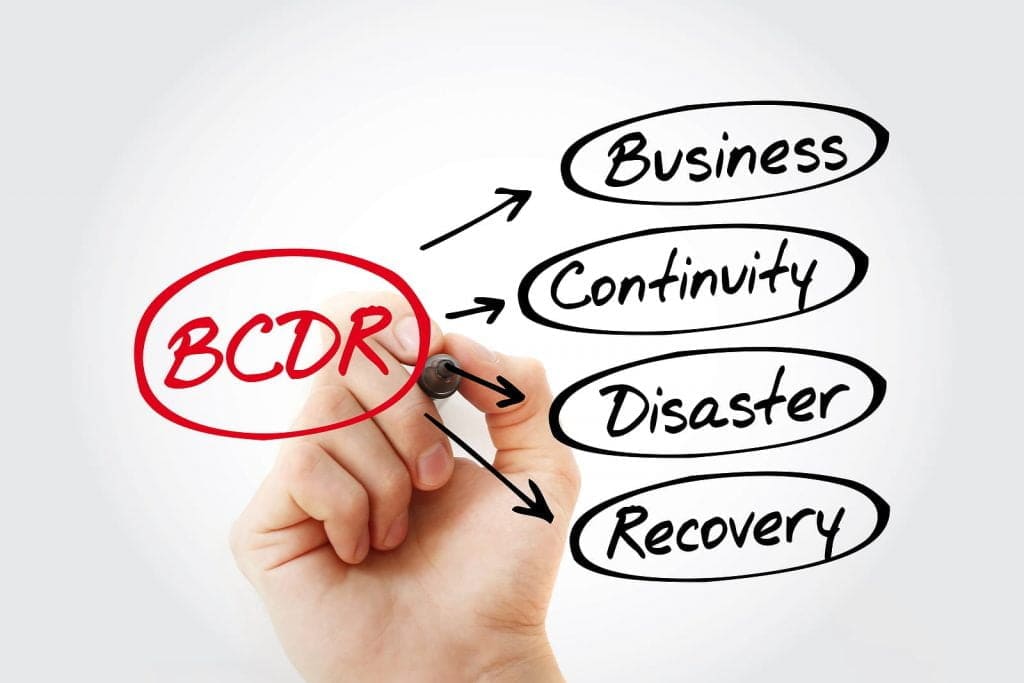Learn about critical elements of a disaster recovery program in this article.
Table of Contents
ToggleThere is such a thing as “disaster imagination” when preparing for any incident, emergency, or disaster of any scale. For businesses, this means being prepared to address anything that could hamper or hinder business continuity, including both natural disasters and those that are man-made.
For one, natural disasters can disrupt operations, loss of customers, stoppage in production, and the like. Meanwhile, man-made disasters can include stolen or ransomed data, hacks perpetrated on your digital assets, or even denial-of-service attacks preventing employees from using company resources or customers accessing your products.
For any of these, an effective disaster recovery plan is essential for any enterprise, especially with increasing cyberattacks and crimes targeting companies of all sizes. With any incident, an effective recovery plan will help minimize damage and quickly restore business operations.
Important considerations when establishing a disaster recovery program
Business operations can be severely affected by a variety of disasters. An earthquake, for instance, can result in infrastructure damages that can result in data center damages or loss of customer transactions. A single cyberattack can also cause damage to your company’s corporate network or database. Data loss and downtime could eventually lead to financial losses or result in business closures.
Some employees may believe that data loss doesn’t impact them. Full-time employees will still be paid during the transition. Downtime can mean financial losses for the company. According to IBM’s Cost of Data Breach Report, the average cost of a data breach has reached an all-time high of $4.35, up from 2.6% in 2021 and 12.7% since 2020.
Further insights from the report state that 83% of respondents have experienced breaches or attacks more than once. Meanwhile, 60% of such businesses have had to resort to increasing the prices of their products and services as a pass-on cost to customers.
What’s alarming is that 40 to 60 percent of small businesses close do not reopen after a disruption in operations from a major disaster, according to the U.S. Federal Emergency Management Agency. Without a disaster recovery plan, your business is at risk of closure, underscoring the need for secure business continuity.
The elements of a disaster recovery program
As mentioned earlier, “disaster imagination” will play a big part in how you can plan for recovery and continuity after a disaster. You need to include detailed scenarios to allow for work resumption, reduction of interruptions, and ways to deal with any disaster when creating a disaster recovery program (DRP), which is an essential part of your business continuity plan. You should include enough time to allow for the recovery of your technology and digital assets and prevent future data loss.
The DRP should be simple to follow, and it should be customizable to meet your specific requirements. To create a successful D.R. plan, it is essential to understand what elements are required.
Establish a disaster recovery team. Designate the key people to be part of your DRP team. They will be responsible for developing, implementing, and maintaining your DRP. Each member should know their responsibilities and how to be notified of suspicious activity. You will need to identify the point person to contact. However, all employees should know and understand your organization’s DRP and what they should do in case of a disaster.
Assess and identify risks. Every risk must be identified and assessed by the DRP team. This includes natural disasters, technology-related events, and man-made emergencies. By separating them, you can create more effective recovery strategies and set up resources in a predetermined time frame.
Conduct a business impact analysis. This involves identifying your organization’s most critical systems and processes and determining the impact of their loss or malfunction. This lets you specify which aspects of your business are essential and critical. This also involves establishing a recovery point objective (RPO) and recovery time objective (RTO). The RPO determines your organization’s tolerance for data loss. The RTO refers to your target duration for recovery after a disaster.
Inventory critical documents, resources, and applications. What business processes are most important to your company? Recovery takes time to reach full capacity after a disaster–thus, your plan should be focused on the short-term. For example, you still have to process payroll, so revenue generation should be your top priority.
Establish backups and offsite storage. Your DRP team should draft the organization’s backup plan. It must specify who will perform these and how, as well as the locations and frequency of backups. All your critical documents and applications should be backed up. This includes customer and vendor lists, inventory records, contact information for current employees, tax returns, financial statements, tax returns, etc. You should keep your most indispensable items and a copy of your disaster recovery plan safe in an offsite location.
Test and maintain your disaster recover program. It is essential to test your disaster recovery program regularly in the face of unexpected events and disasters. This allows you to assess if your procedures are effective and appropriate. Your team can test the plan and update it regularly to adapt to changes in technology, business processes, or current risks.
Prioritize. Your DRP team’s impact analysis will inevitably lead to different prioritization, depending on each one’s consideration of their own areas of responsibility. The team will need to make hard decisions to determine which will take precedence. Some questions will include what is considered essential and what needs to be restored immediately post-disaster.
Apart from critical data and information systems, this should also include communications strategy and infrastructure, secure access to data, and ensuring a safe working environment within the organization.
Have redundancies and contingencies beyond data. Business operations require much more than data, and you will need to ensure continuity post-disaster. Consider the organization’s needs in terms of hardware, workplace, and even staffing. This goes beyond the software, platforms, and hardware that the company owns.
The pandemic has perhaps become one of the best case studies in how businesses can maintain continuity, for example–especially those that have had to resort to the option of remote-working arrangements. A recent study by McKinsey found that 58% of workers in the U.S. say they can work remotely full-time–that’s 92 million people who will also need provisioning for business continuity.
Test, optimize, and update. Without consistent testing, optimization, and updating, your disaster recovery plans will not be able to meet the needs of a real emergency. These will remain unproven hypotheses and recommendations unless you can practice them and familiarize yourself with the process.
The takeaway
A detailed plan for a disaster recovery program starts with an organization’s readiness to face any threat. Assess your risks, establish your goals and priorities, and optimize your policies and procedures. Being dependent on technology, any business’s critical functions may be affected by a natural or human-made disaster. Preparation will be the key to your organization’s survival.




